Inbetweening
What you need:
Post-It Notes
Pen
Patience
Instructions:
Think of a single action. It can be anything at all, but best to keep things simple and clear.
A person jumping, a ball melting, something being smashed, someone’s smile turning into a frown, etc…Draw the start of your action on one Post-It Note and end of your action on another. If there are other important moments in your action, draw them too. For example, if your action is someone jumping, you may want to draw the moment before the jump, the top of the jump, and the landing. In animation, those crucial moments in an action are called keyframes.
Treat your images as if they are stills taken from the same shot in a film. If things change (angle, scale, shape, etc…) try to plan for that when you create your key panels.Draw the missing steps of your action. Before you start, it might help to think about how many panels you want in total, this will tell you how many steps you need to break your action into. In animation, the act of filling in the images between keyframes is called inbetweening.
Post-It Notes are semi-transparent, when you place one Post-It over another you can see through it to the drawing underneath and use it as a reference for scale and help make incremental changes (in animation, this is called onion skinning).Add or redraw whatever you need to make the comic work for you.
Bonus activities:
Think about the movement of your action. Does the action happen at a constant rate, or is the movement variable? Are some parts of the action slower or faster than others? You can draw out the slower part(s) of the action by adding more panels in those areas and speed up others by using fewer panels.
Try this exercise in a looser, less constrained way. Follow a single action but allow yourself to vary the framing, angle and distance from the subject. Perhaps include other images that provide context or contrast.
Try adding text to your sequence. The text could be literal, but it could also run parallel to the sequence, acting as a metaphor or context for the sequence.
Ramble:
I’ve been working on a collaborative project for the past few months with an analog Synth band called SCHEME. I’ve been creating the story and visuals and SCHEME composed music to accompany a live reading. We performed the piece for the first time this past Thursday as a part of a Read To Me collaboration with the University of New South Wales.
SCHEME’s performance made my story so intense and dramatic. It was really fun.
And we dressed up in fancy silver capes for the occasion.
Photo’s by Bee Elton (thanks Bee!)
The story I’ve been making is designed for performance and for SCHEME. They sound like a bunch of space age wizards, pitch-shifting gravity, bending and twisting planetary orbits, and whistling into black holes. They’re pretty weird and super cool, and a story about aliens seemed appropriate.
I found myself stretching out moments and creating slow, almost cinematic (though still very scrappy) sequences that I felt would work well with the strange, ominous droning of their music. I found that working like that, really drawing things out over time, was extremely satisfying and made certain moments more intense and visceral.
I am now in the process of finishing the story and turning it into a book. I still want long, slow sequences in there, but I don’t think a wide screen format will work for them. Having a grid of smaller panels seems to work and (while definitely less cinematic) seeing these slow changes together on one page allows readers to notice small changes a bit easier.
That’s it for now!
Thanks, as always.
And more soon.
x
f


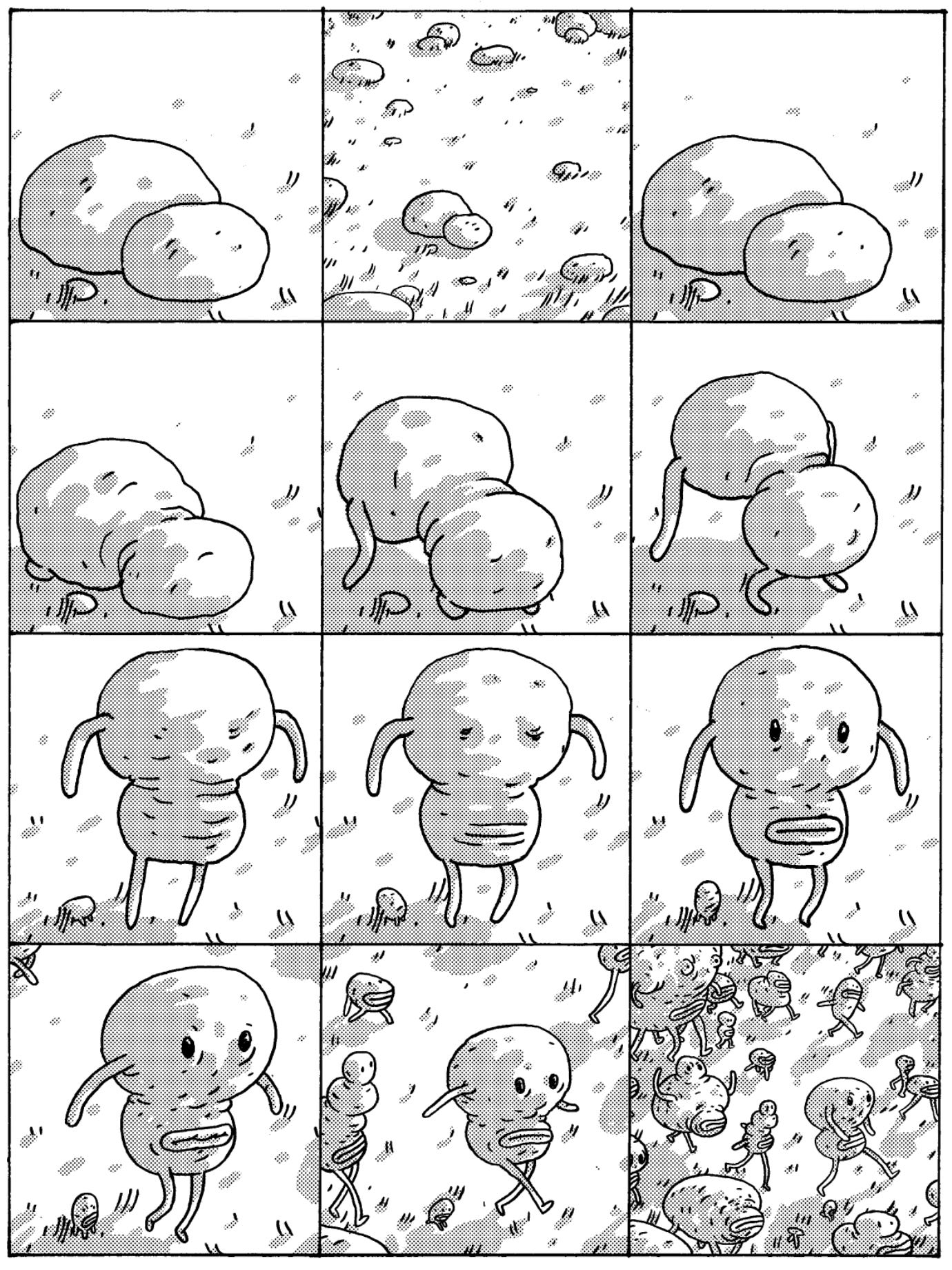
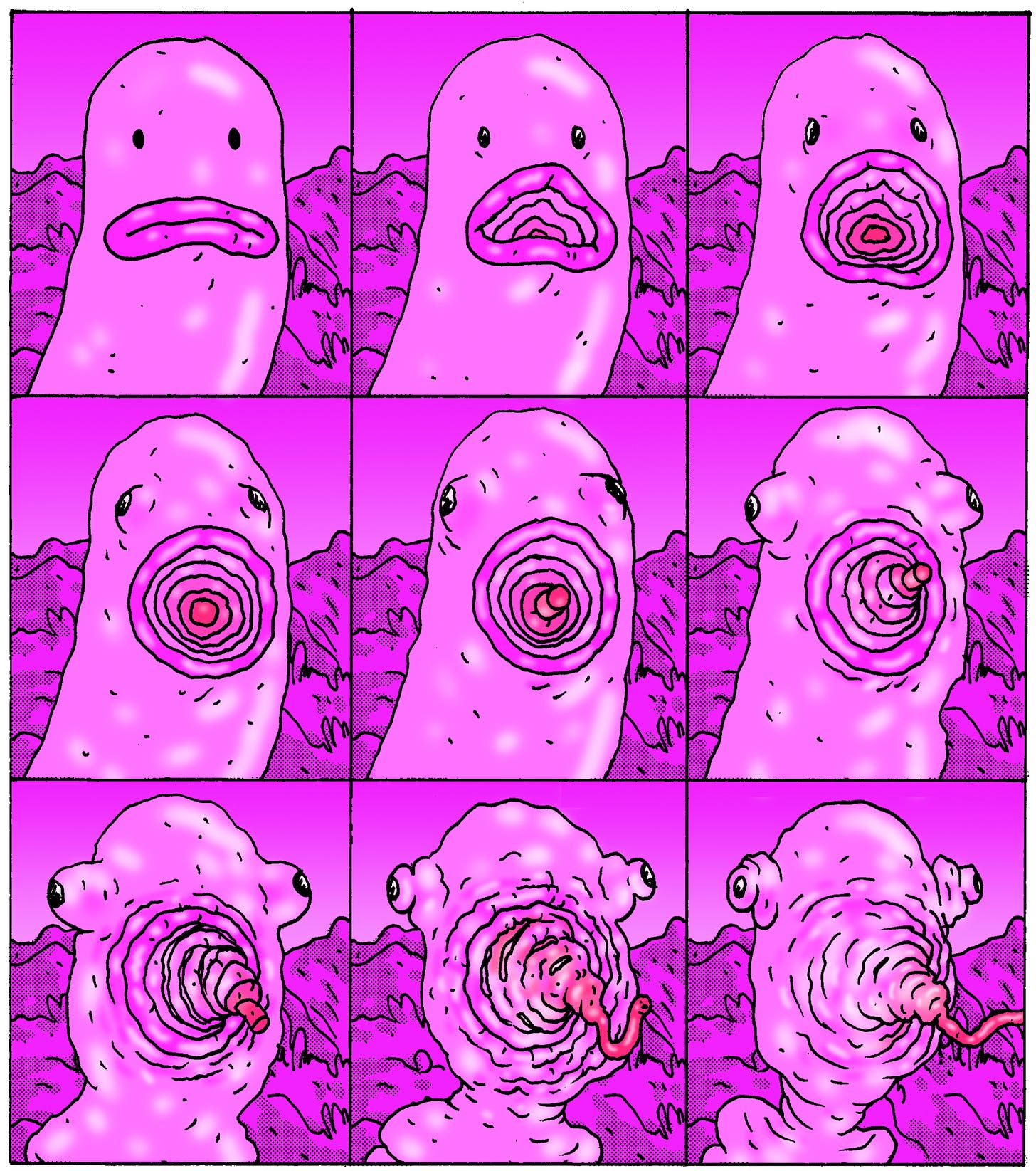
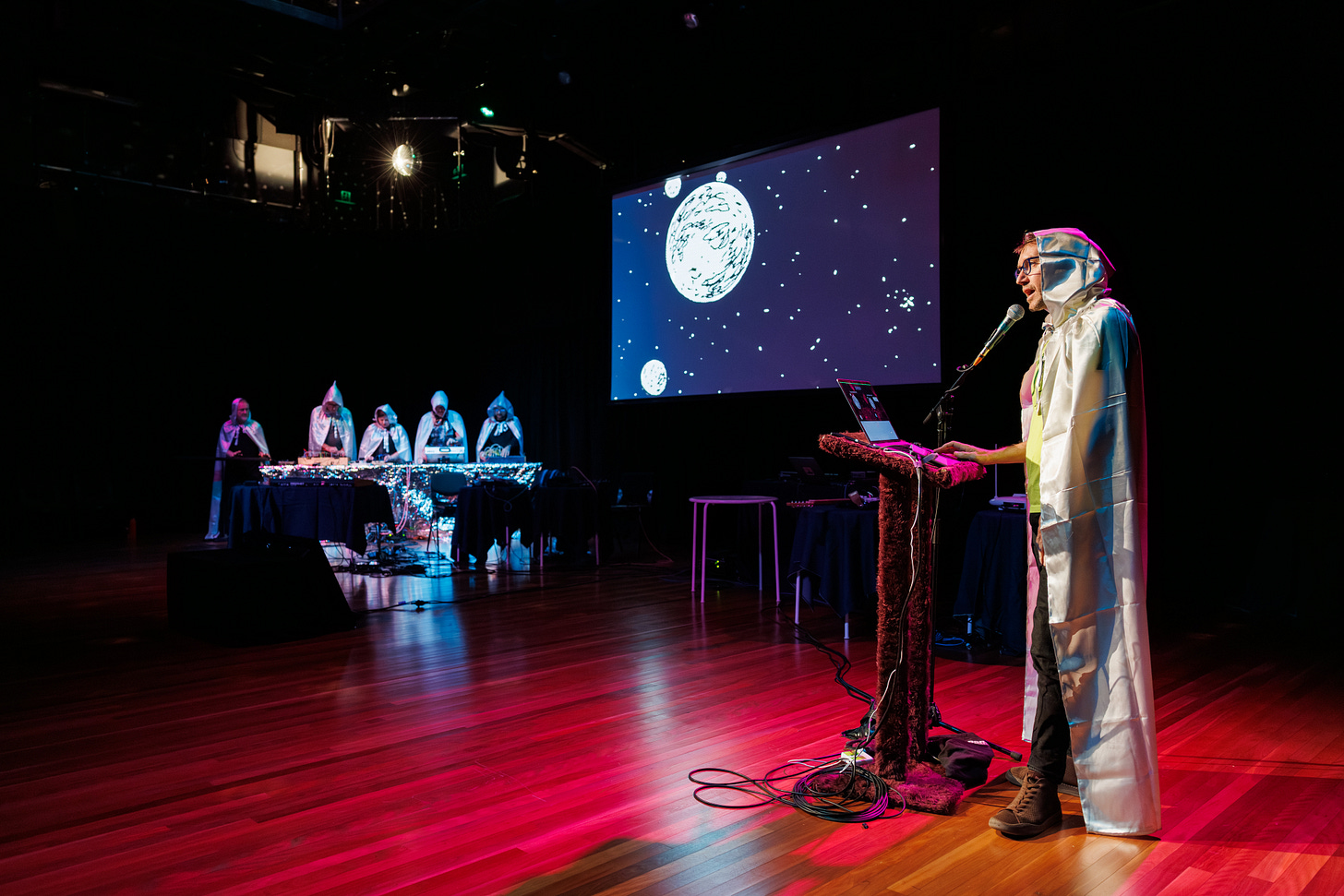
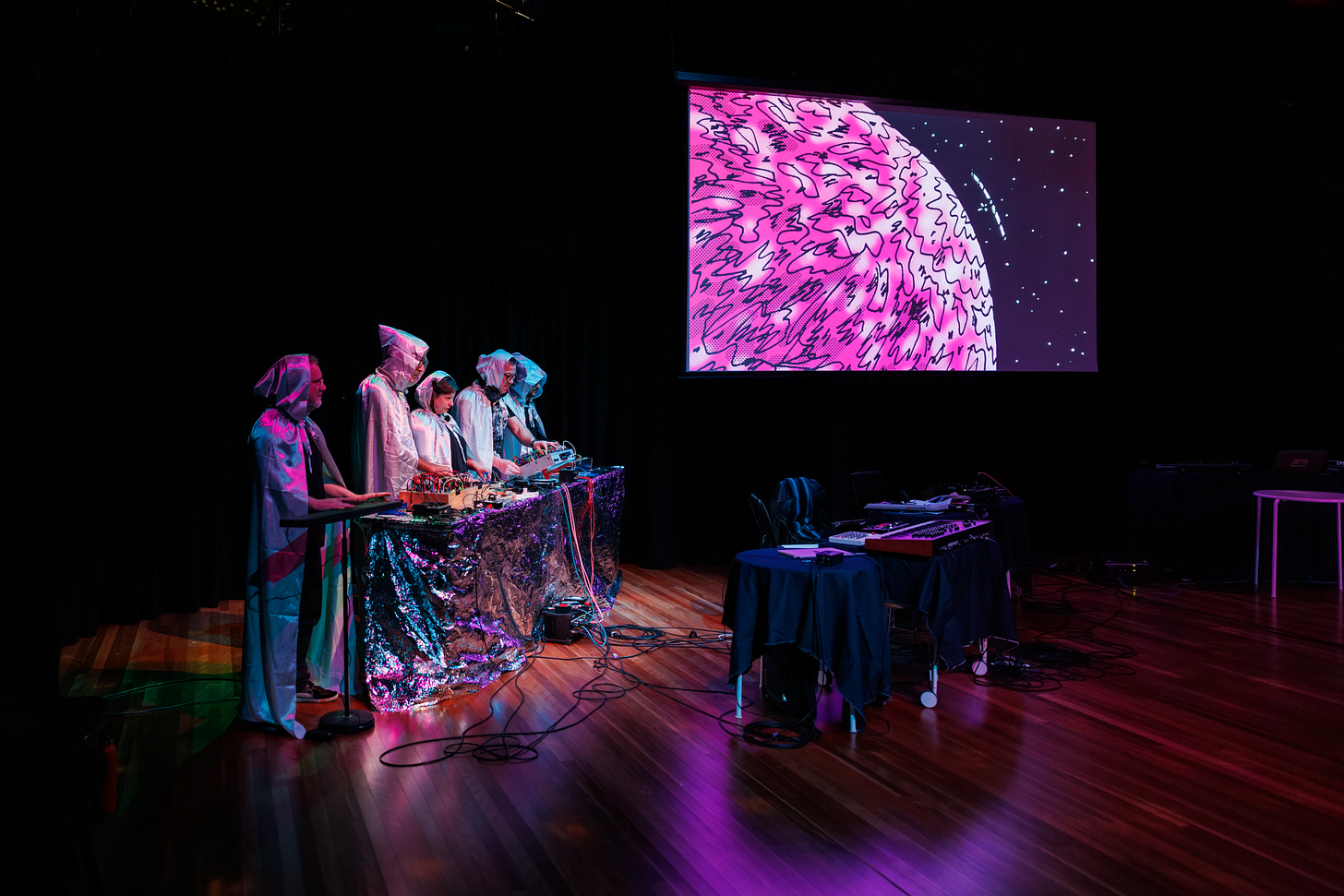
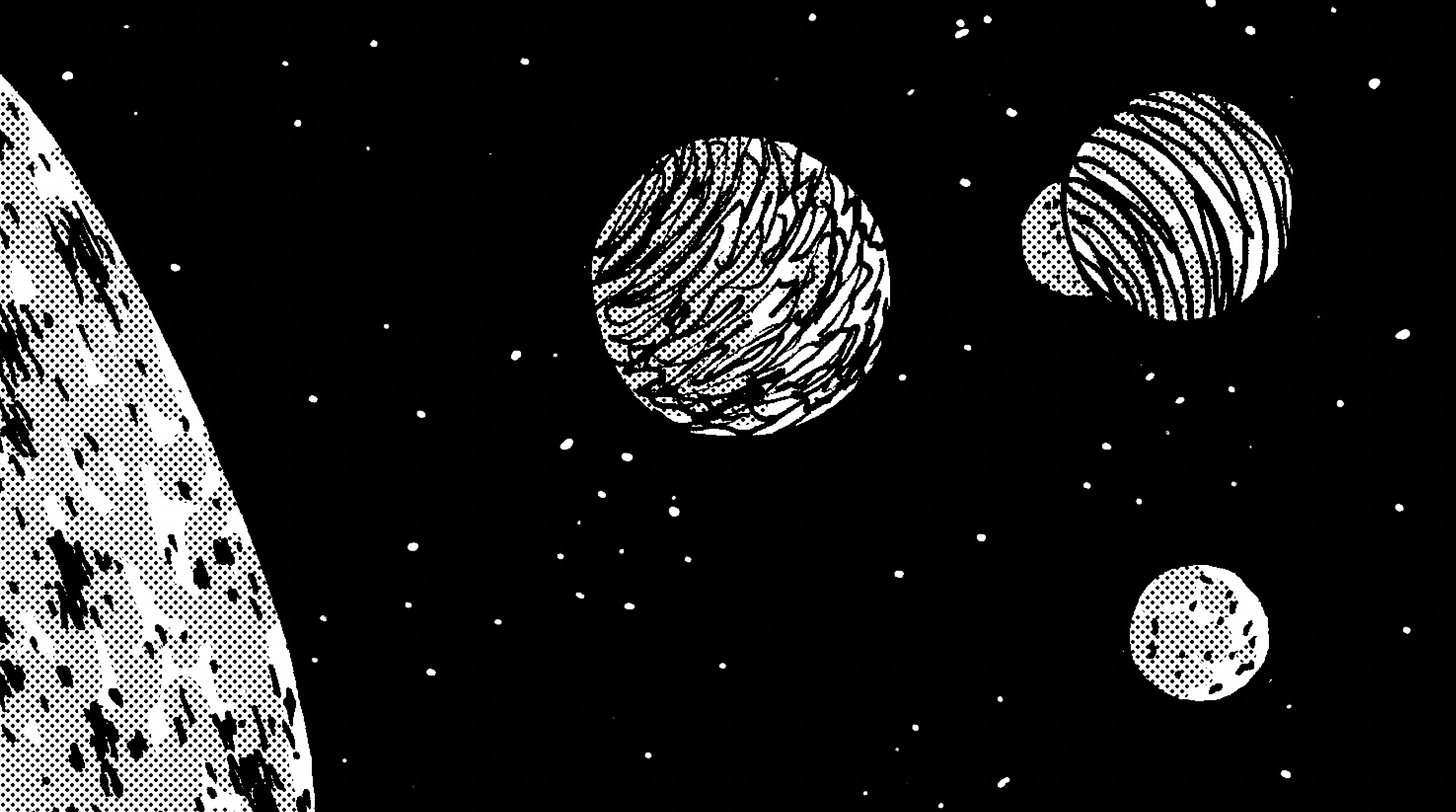
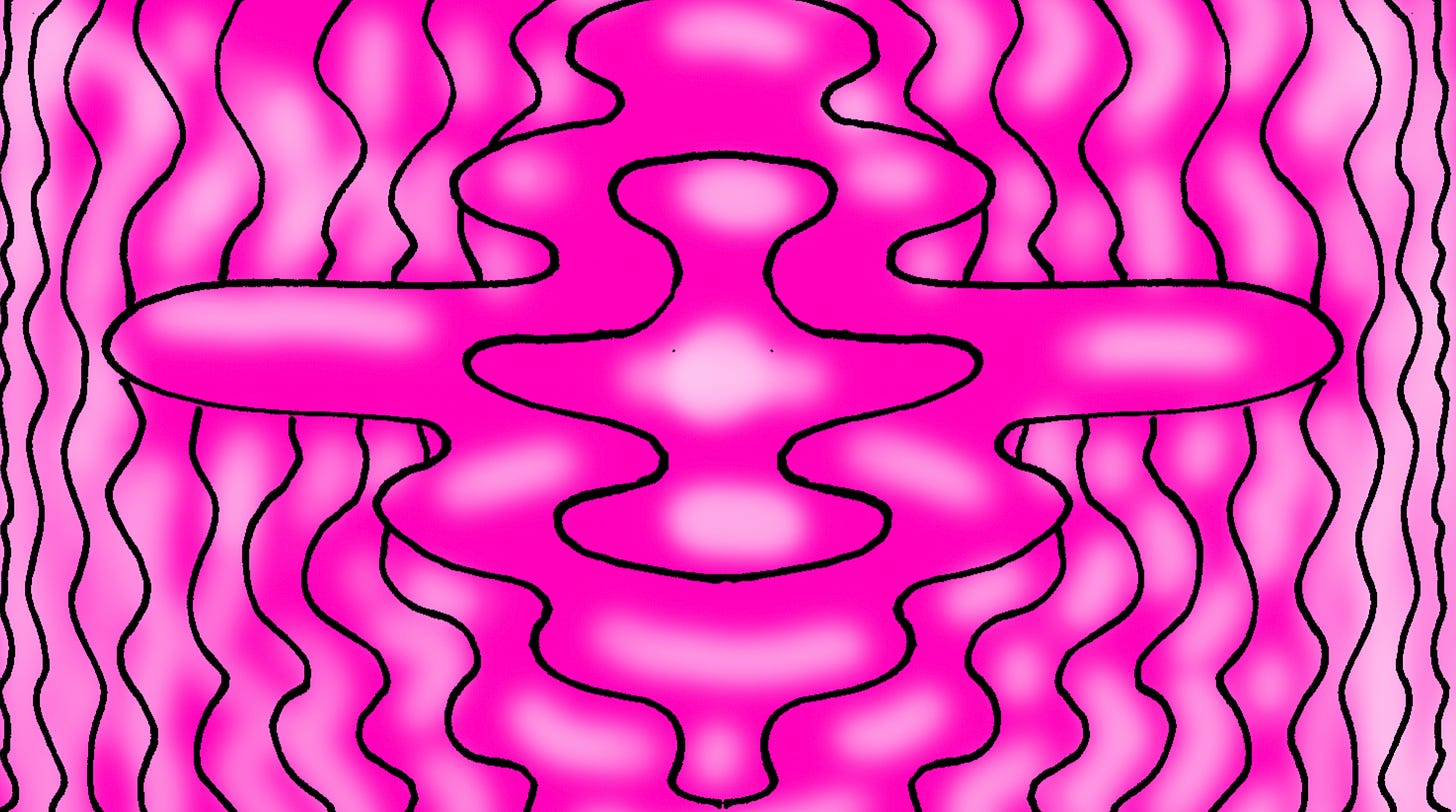
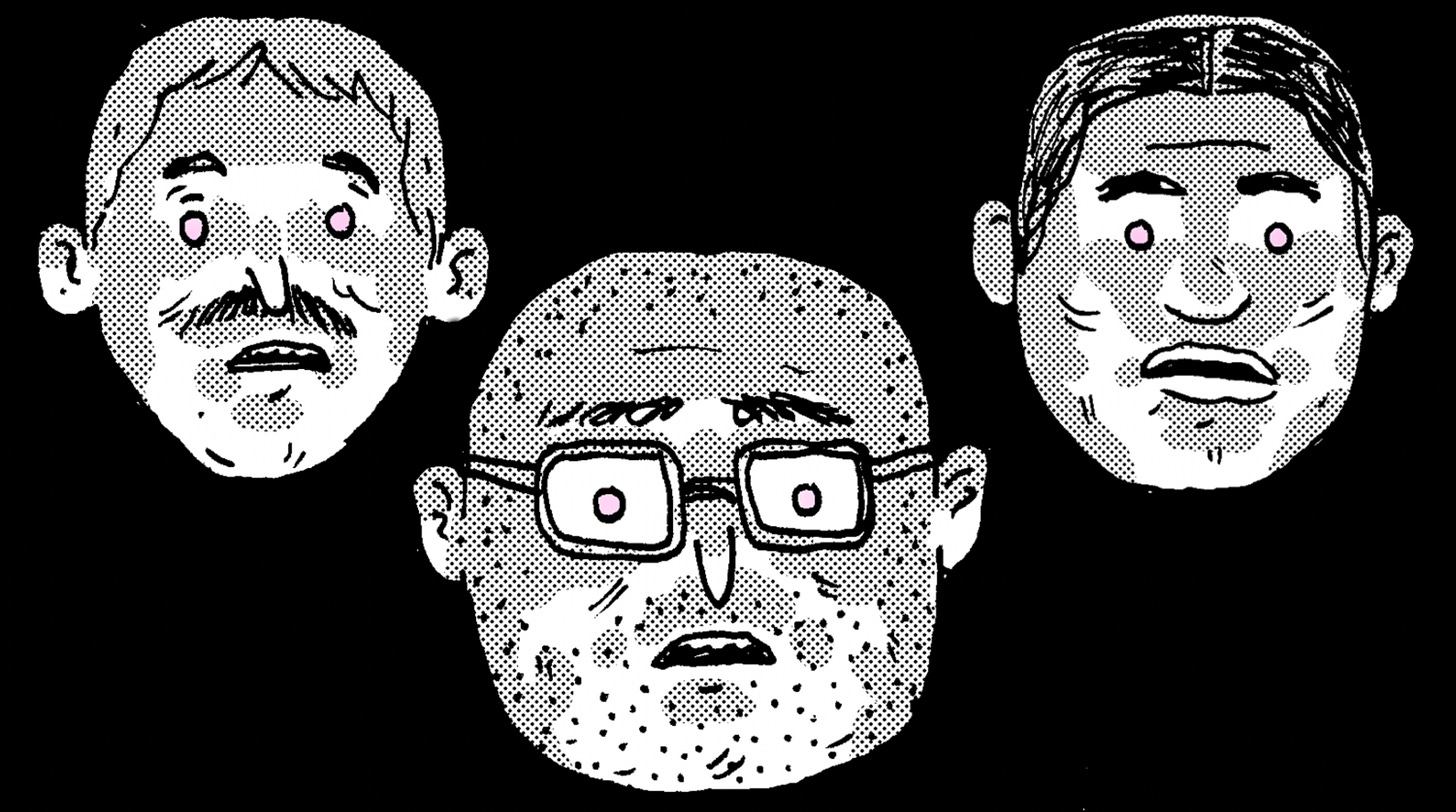
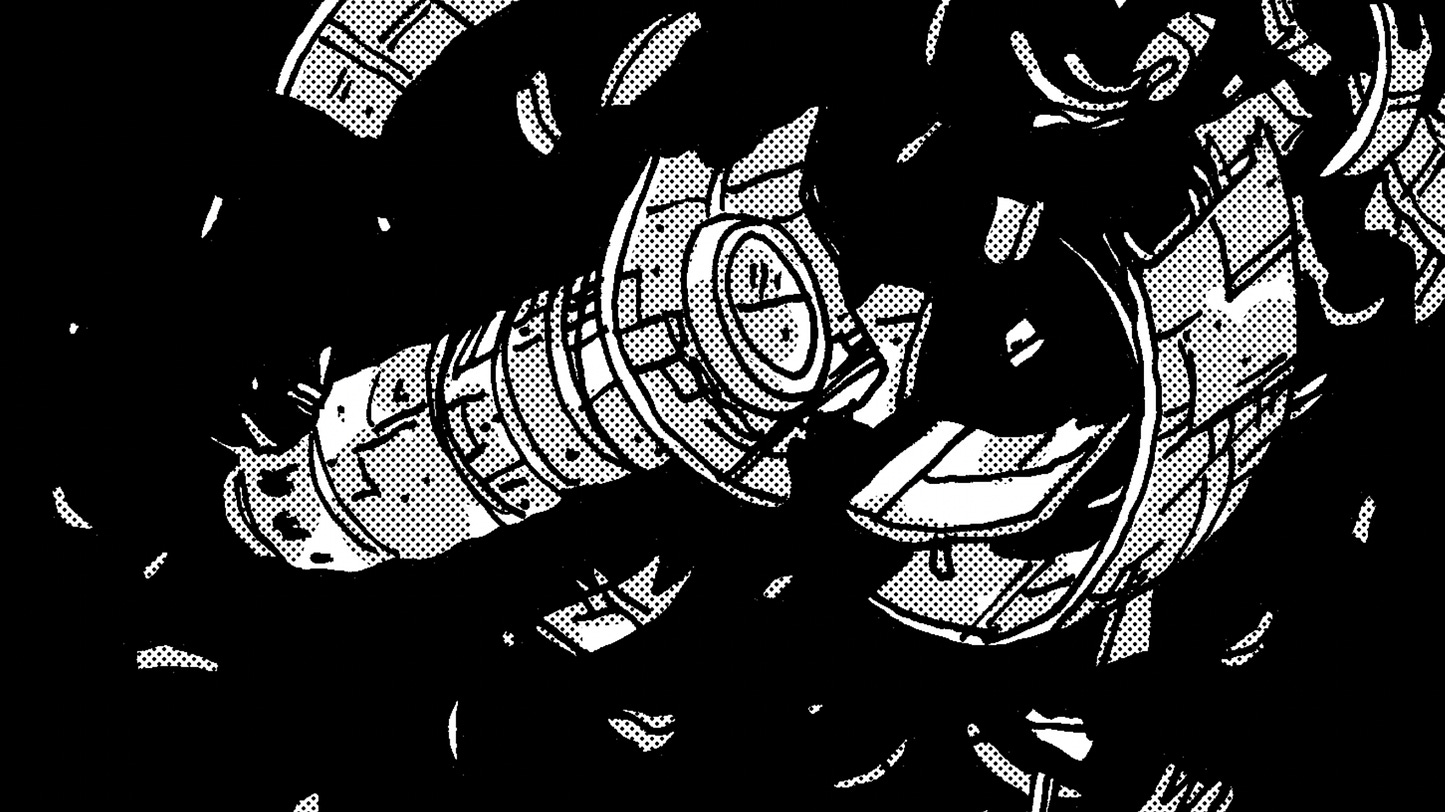
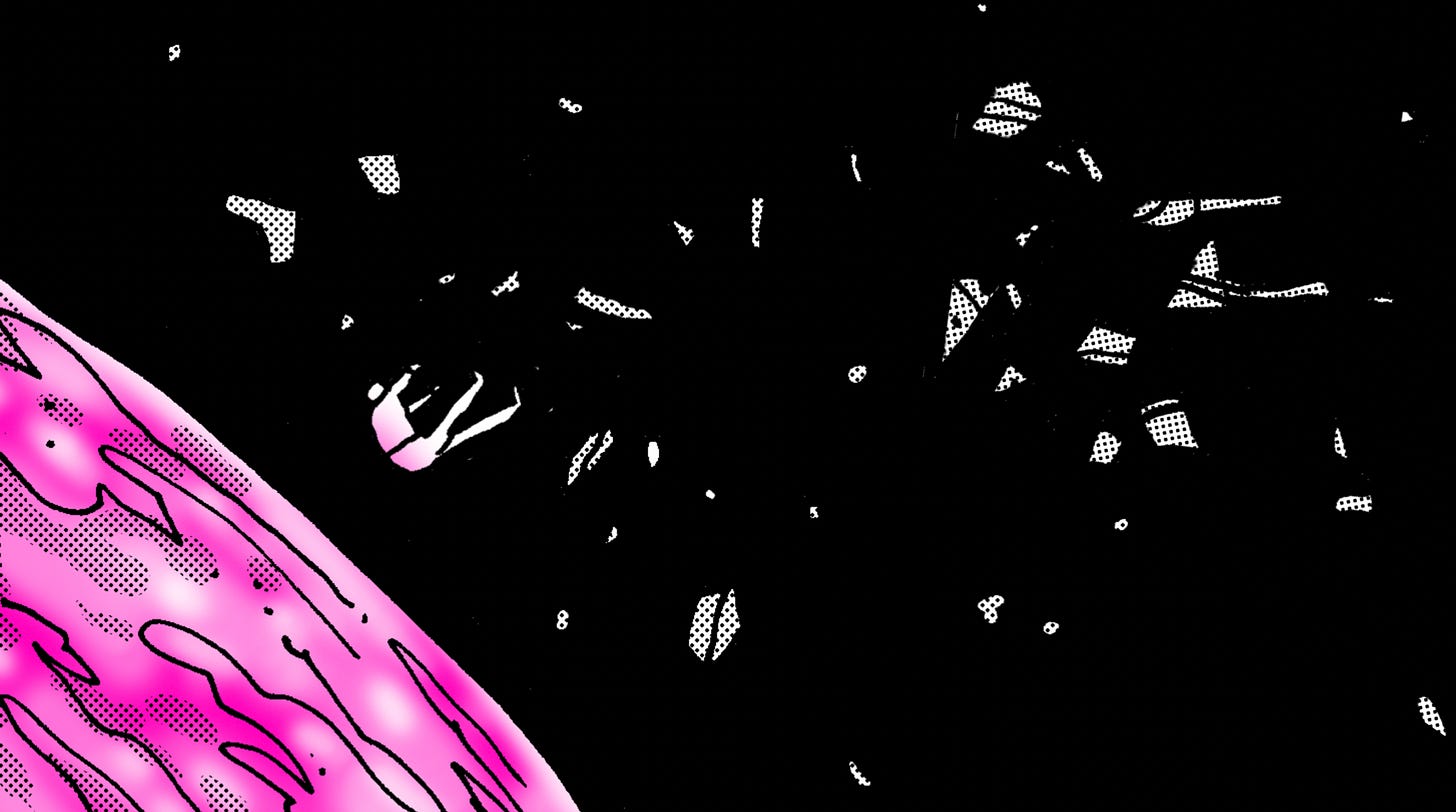
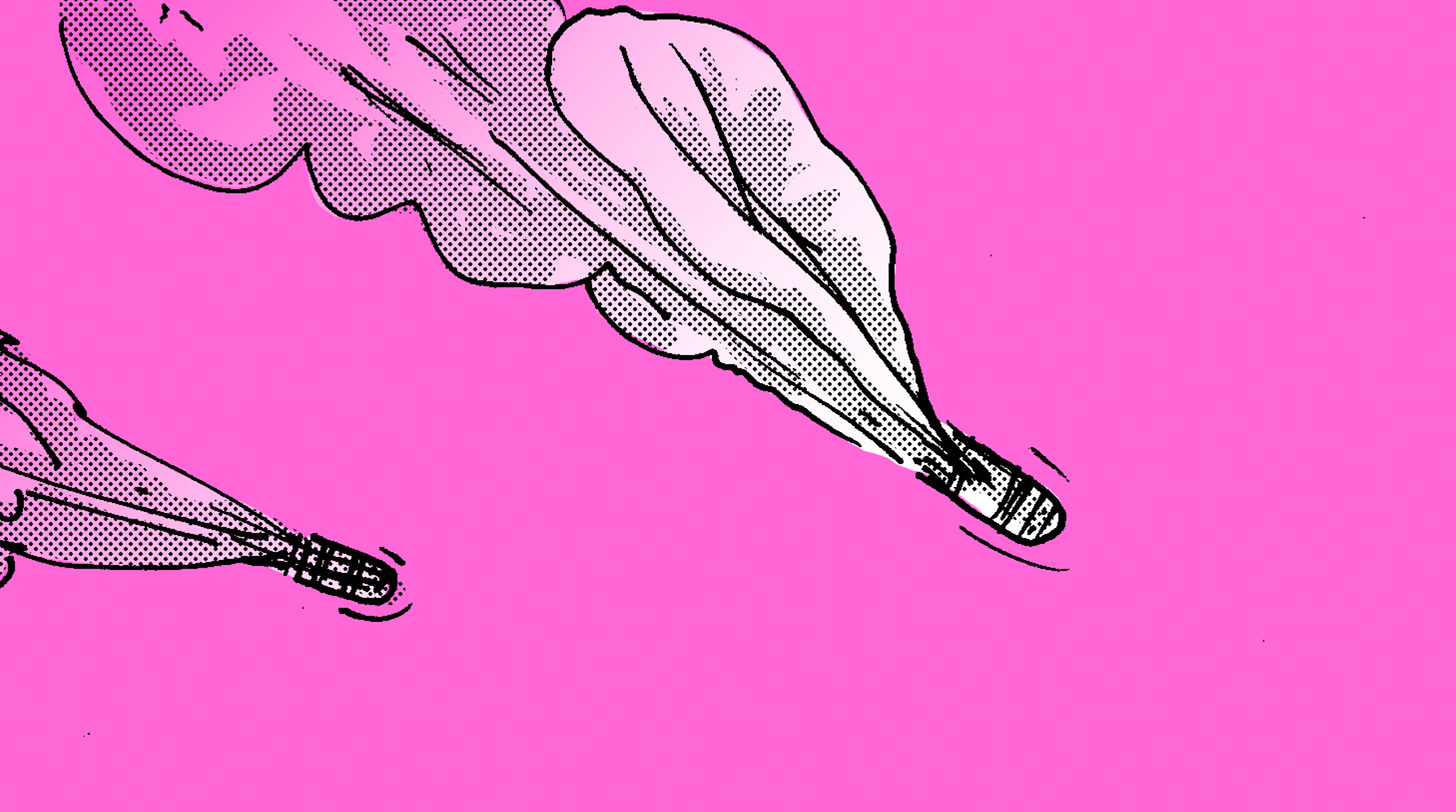
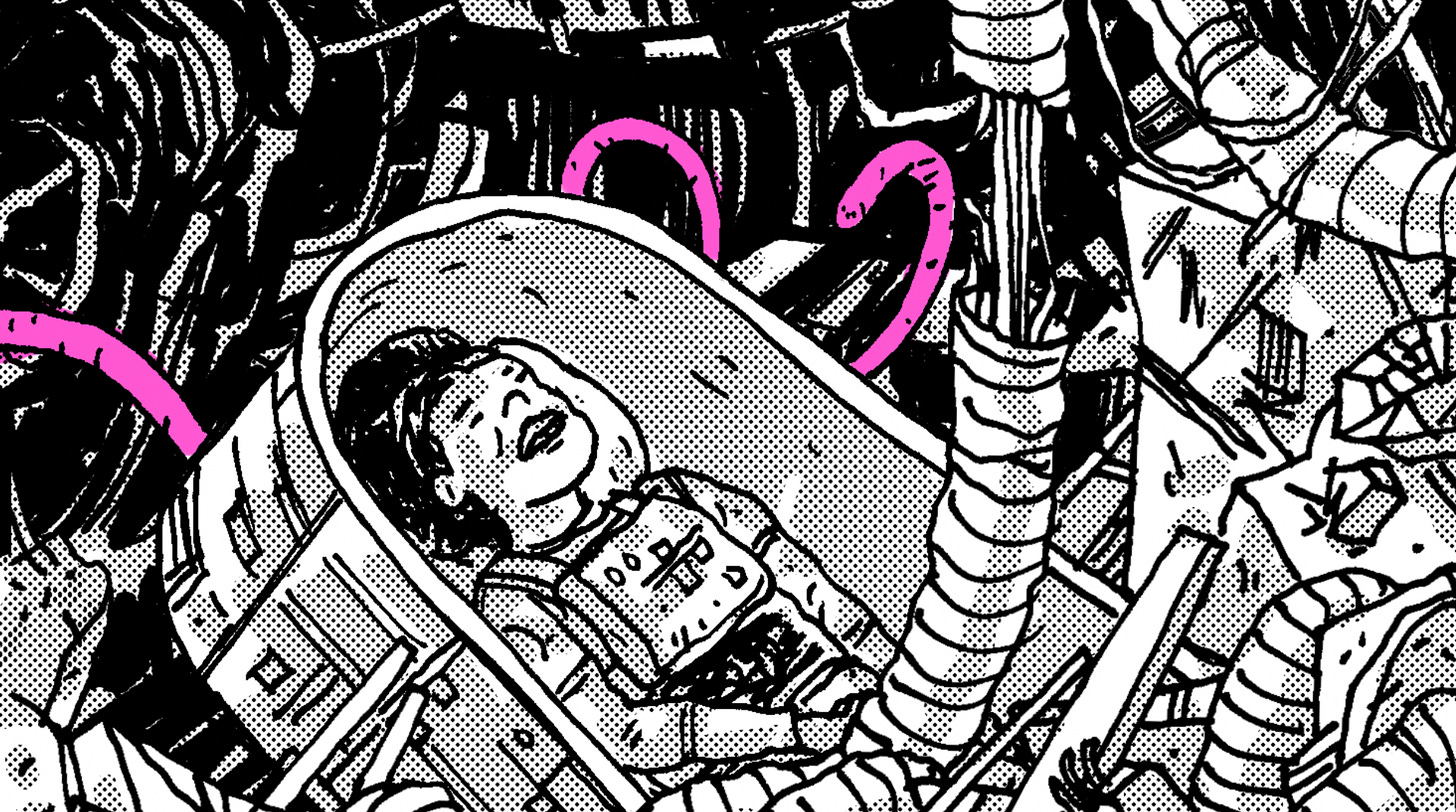
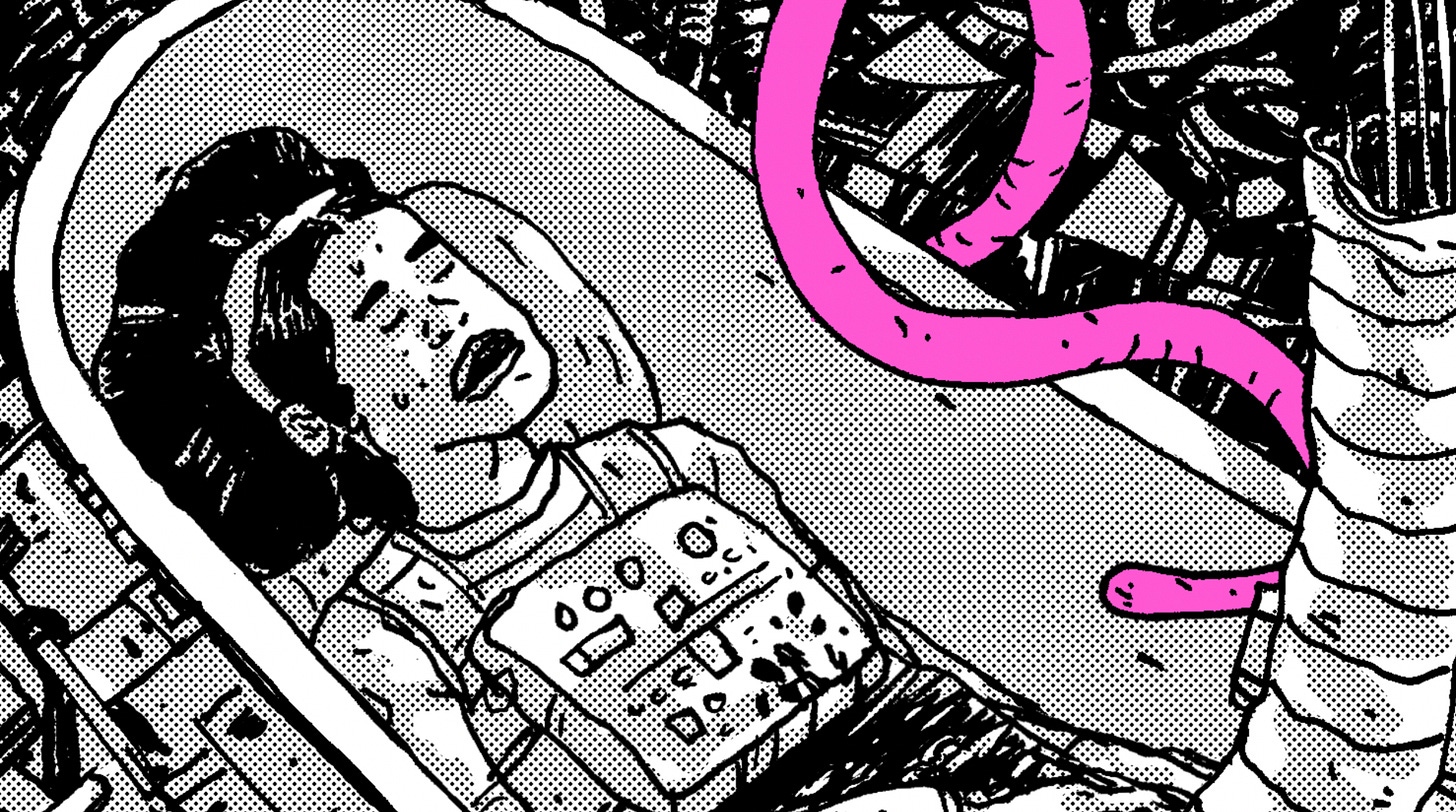
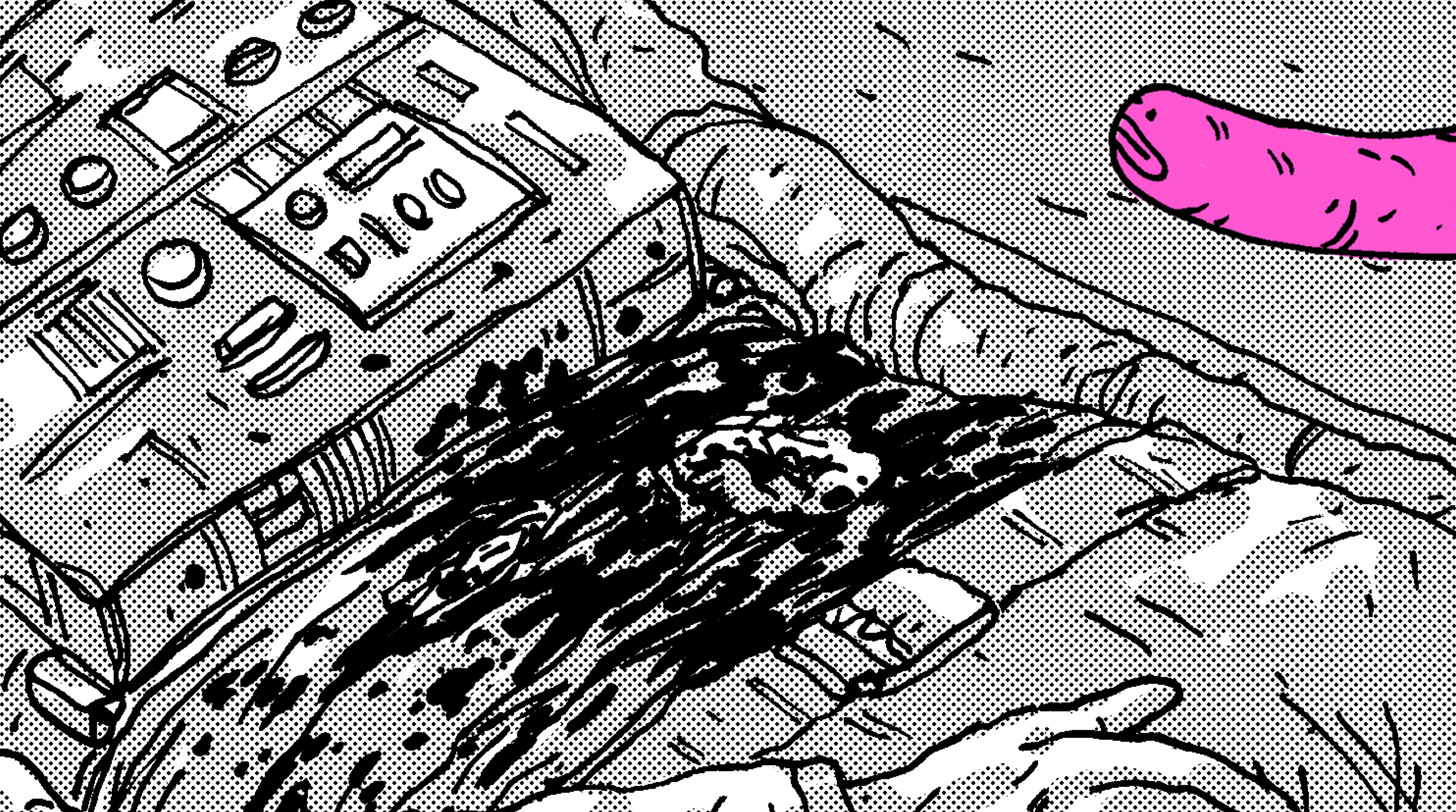
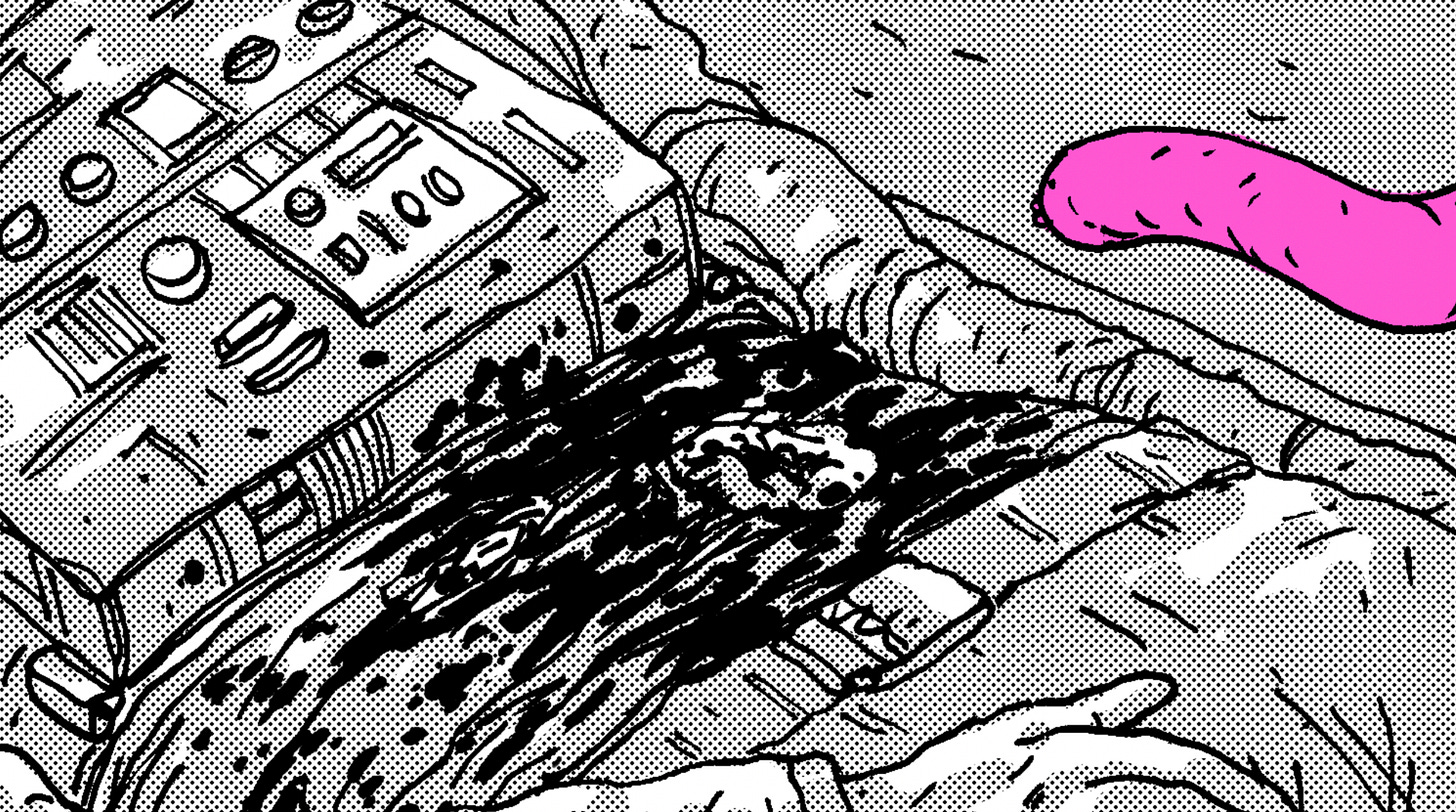
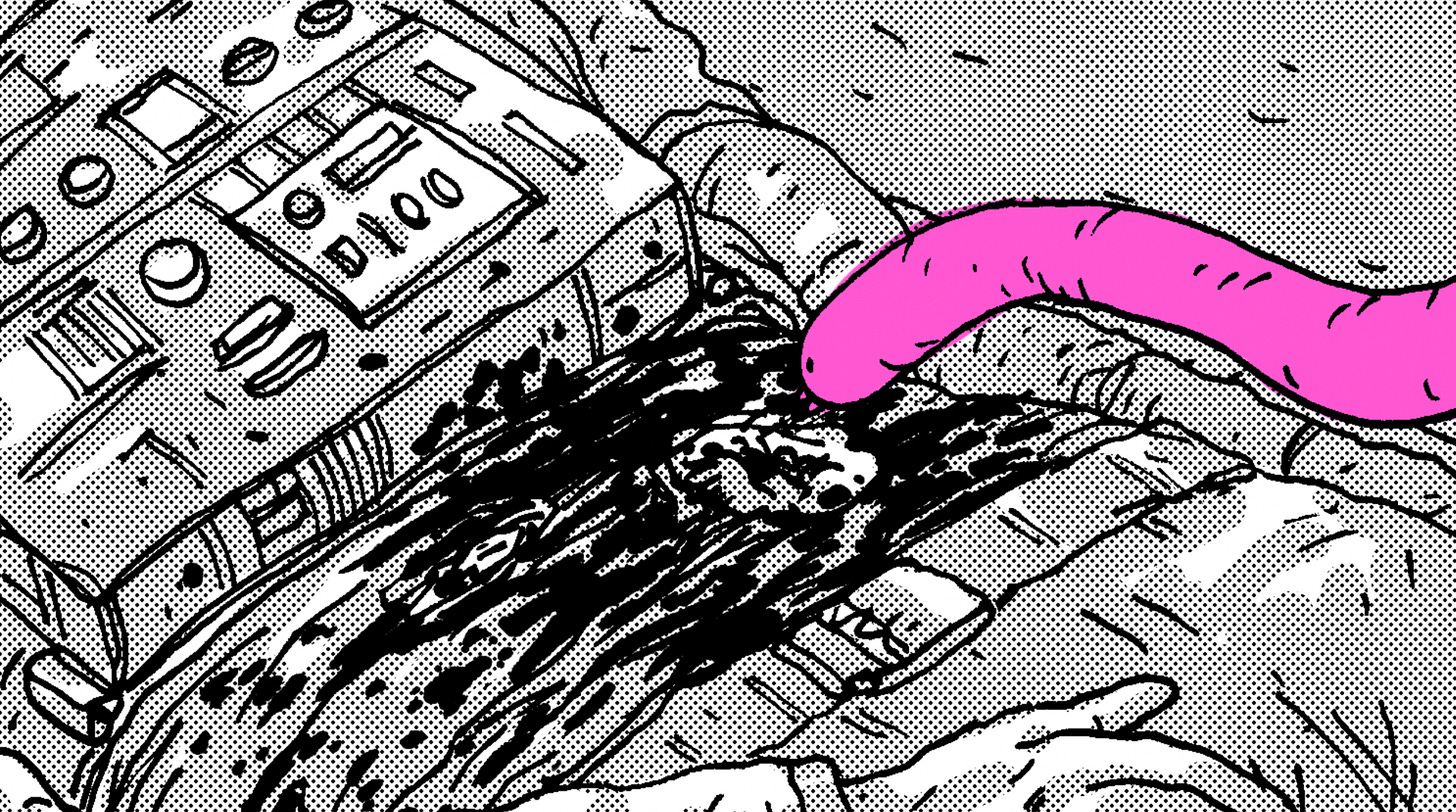
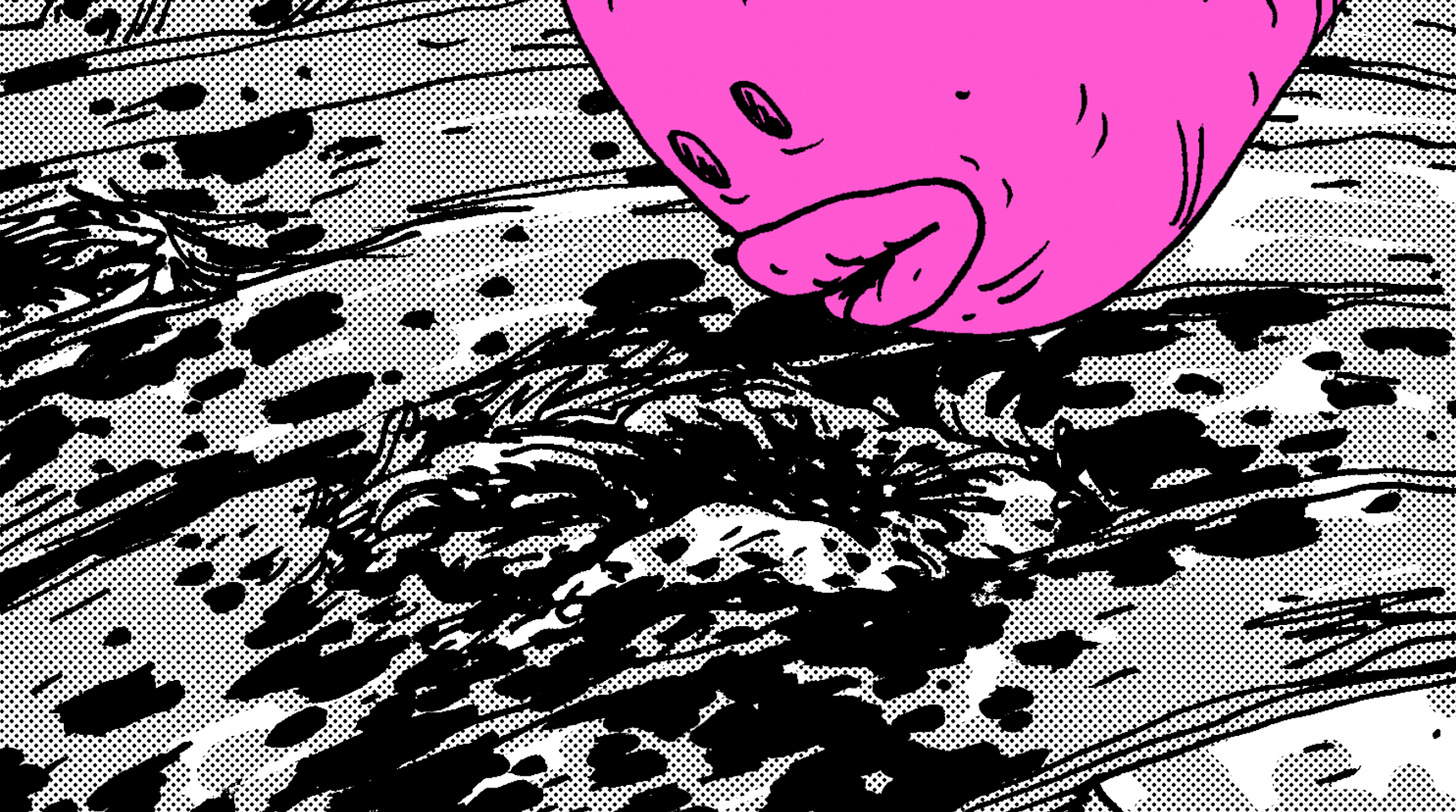
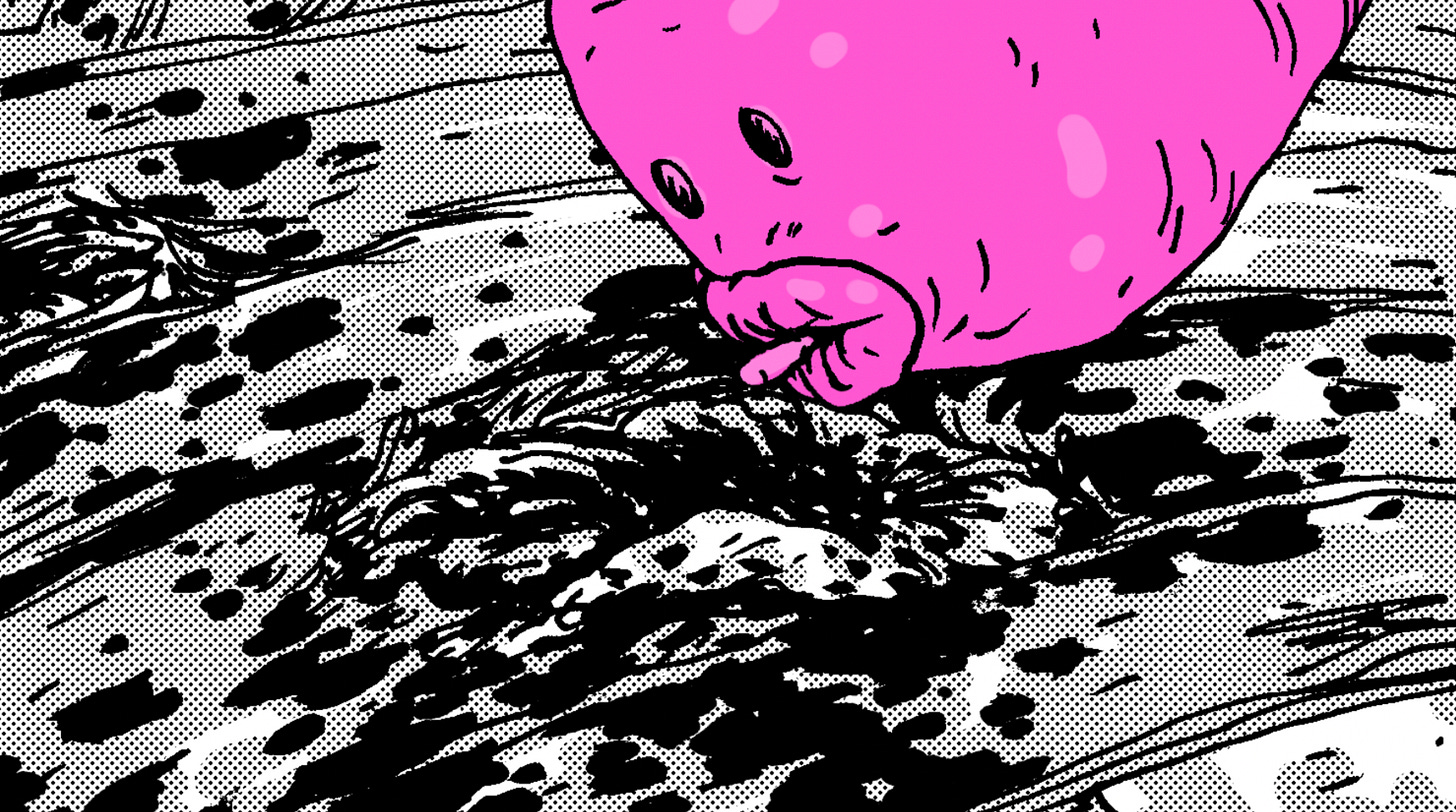
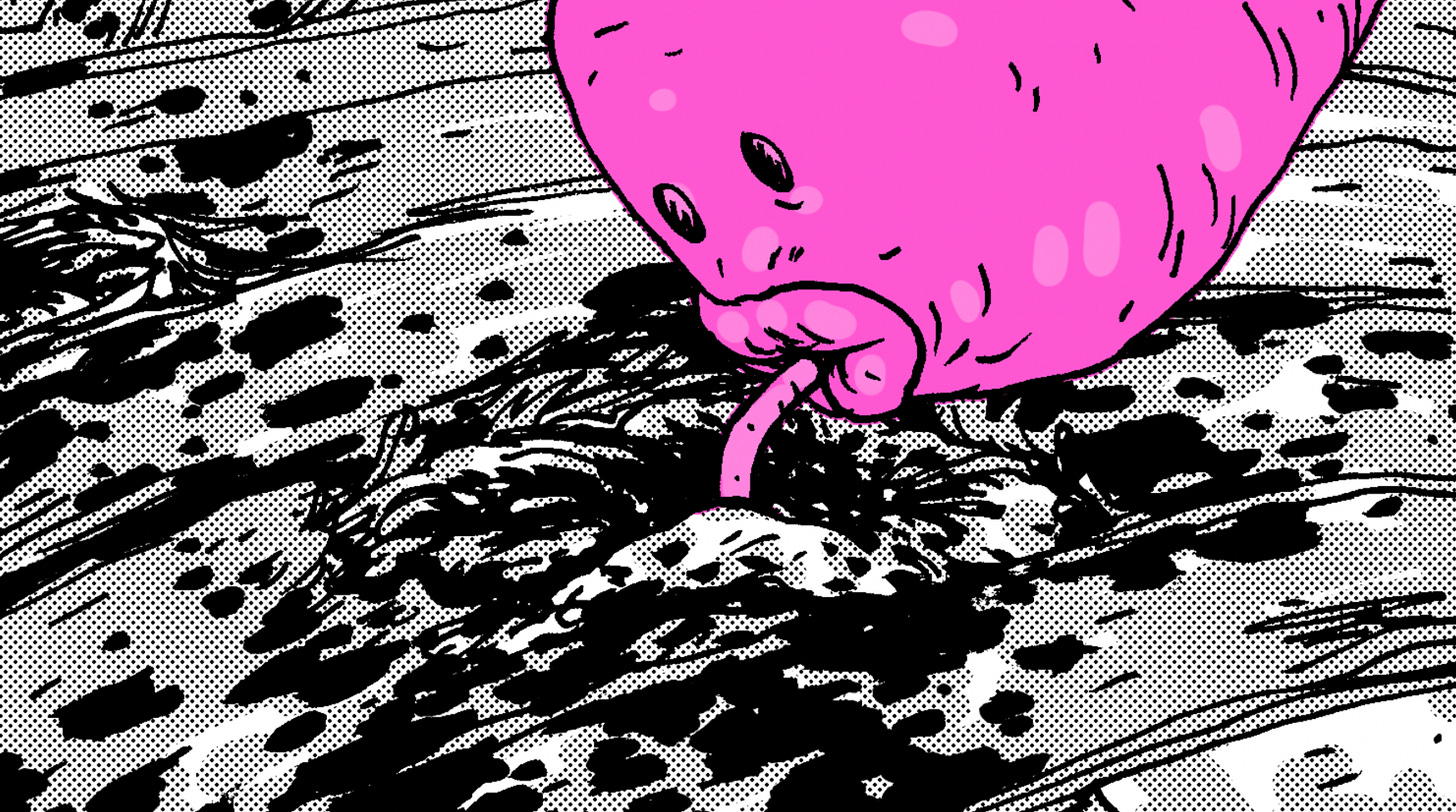
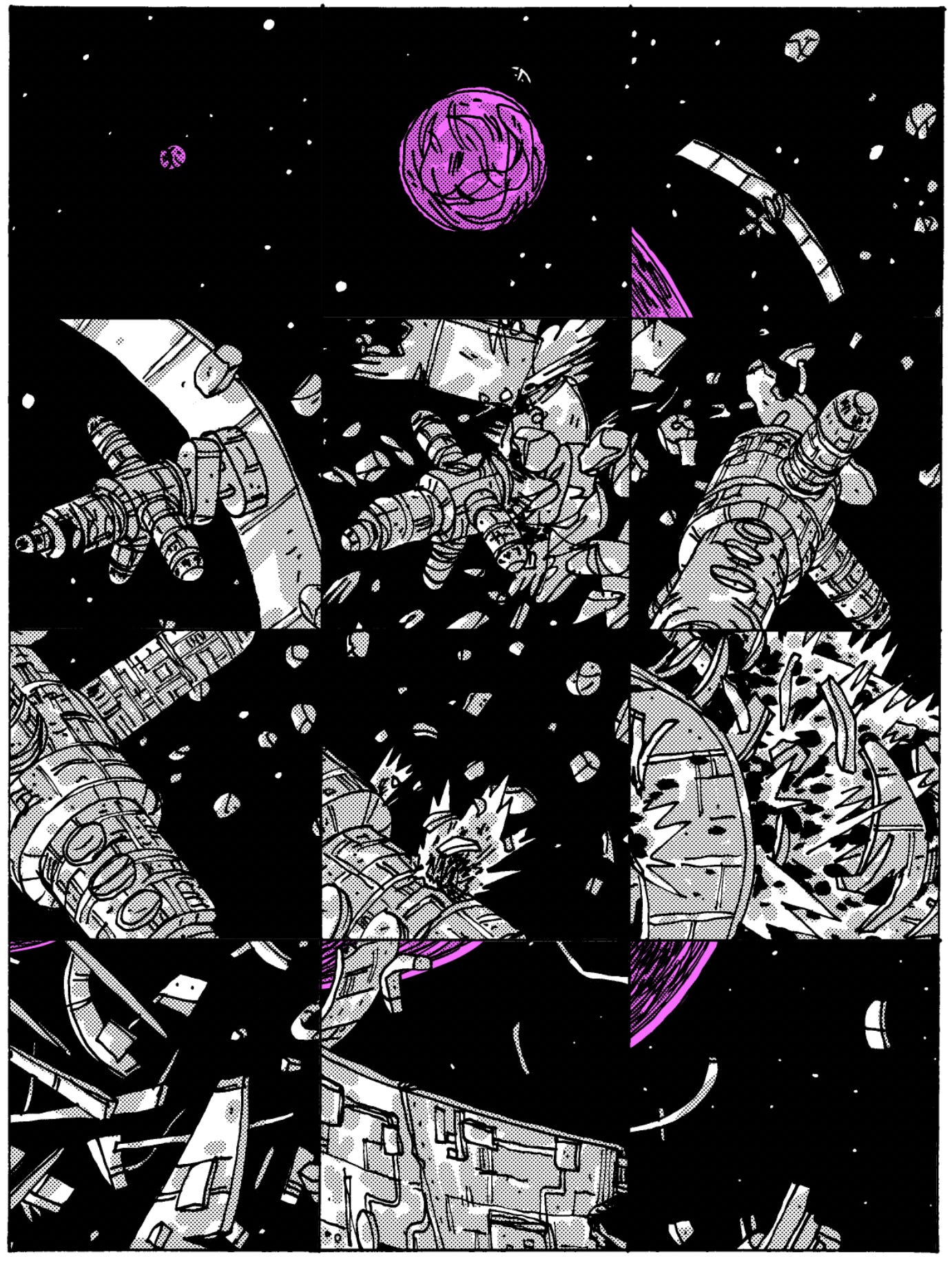
Thank you. Really enjoy your insights into process - and drawings and ideas are great!
That collab project looks amazing! I like the way you show movement in these panels. Can't wait to see the finished story!